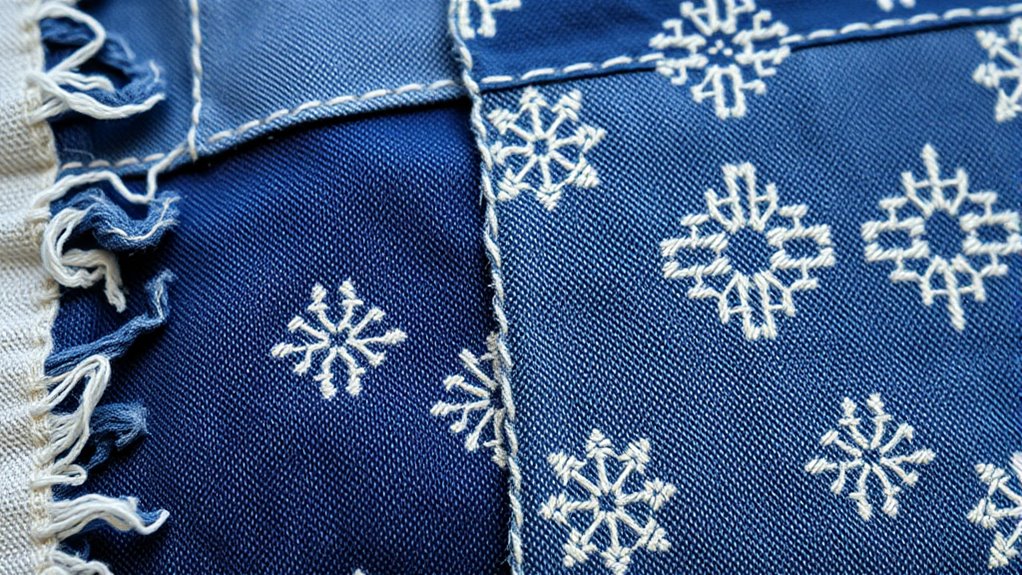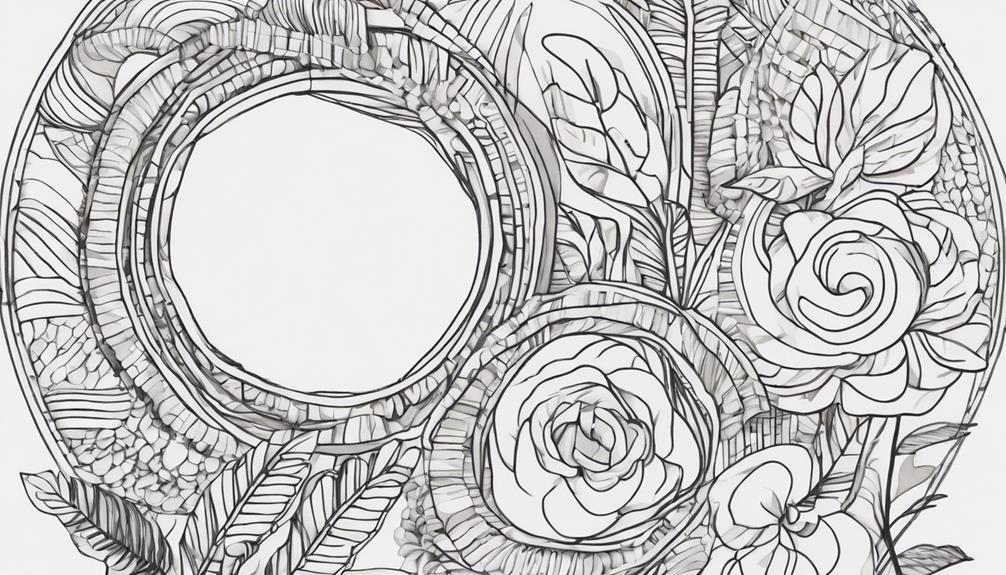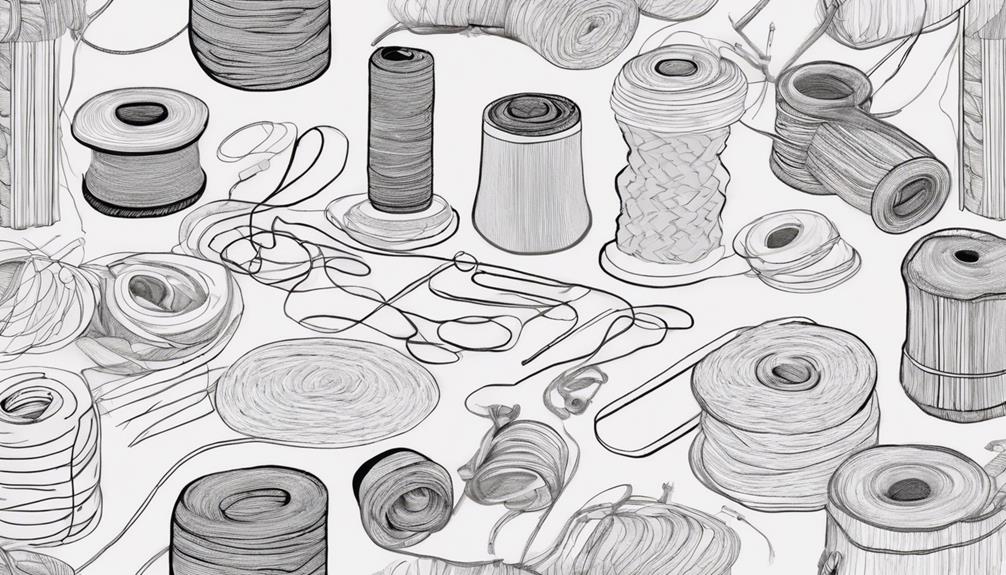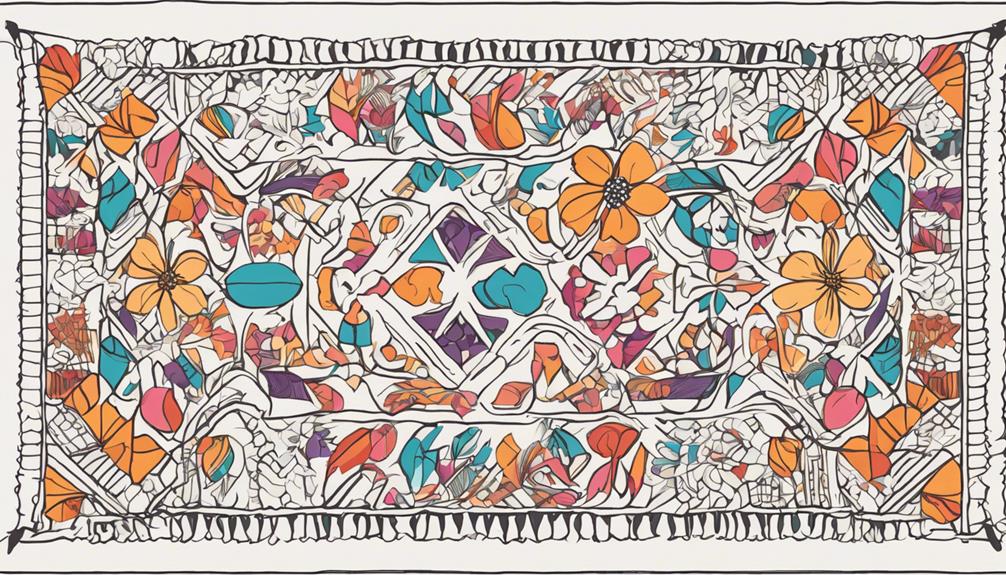Japanese textile arts like boro and sashiko reflect centuries of resourcefulness, cultural symbolism, and craftsmanship. Boro showcases how worn fabrics are patched and repurposed, emphasizing resilience and sustainability, while sashiko turns reinforcing stitches into intricate patterns symbolizing good luck and protection. Both practices elevate practicality into beauty and storytelling. If you explore further, you’ll discover how these traditions continue to influence modern design and cultural identity.
Key Takeaways
- Boro showcases resourceful patching and layering of indigo textiles, reflecting sustainability and cultural resilience in Japanese history.
- Sashiko is a decorative reinforcement technique with geometric patterns symbolizing good luck, protection, and cultural stories.
- Both practices emphasize craftsmanship, storytelling, and the cultural importance of recycling worn fabrics.
- These textile arts embody values of humility, resourcefulness, and collective effort across generations.
- Sashiko also serves as a form of fine motor skill development and visual-motor integration in traditional Japanese education.
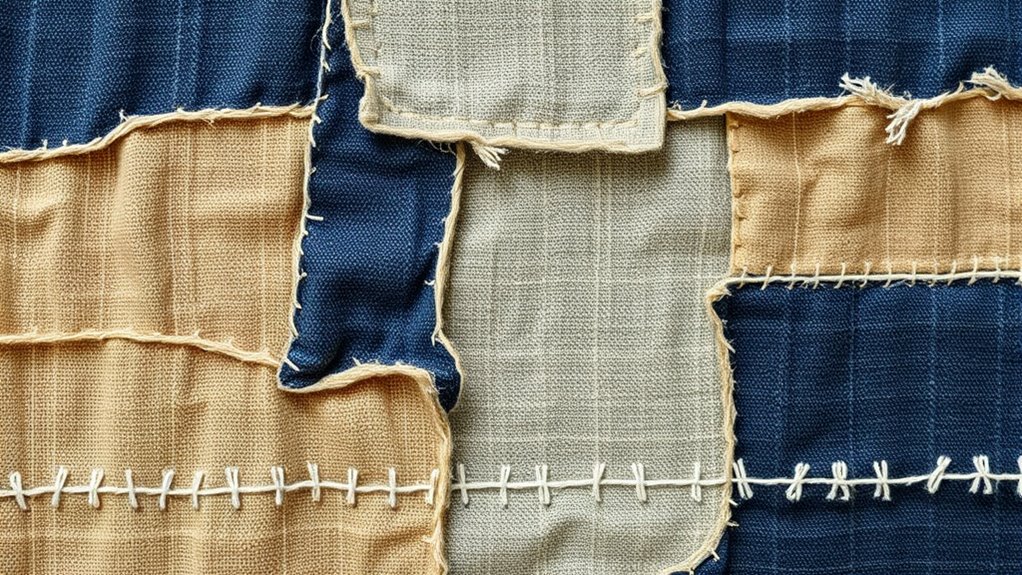
Have you ever wondered how Japan’s rich cultural heritage is woven into its textile art? It’s a fascinating story, especially when you explore traditional practices like boro and sashiko. These textile arts aren’t just about creating beautiful fabrics; they embody a deep sense of resourcefulness and cultural symbolism. Boro, for instance, showcases recycling techniques that tell a story of necessity and ingenuity. In rural Japan, people didn’t waste materials—they patched and repurposed worn fabrics to make them last longer. You’ll notice how layers of indigo-dyed cloth are stitched together with visible, deliberate stitches, turning what could be discarded into something valuable again. This approach demonstrates a profound respect for resources and a sustainable mindset that’s rooted in history. Every patch and stitch in boro represents a practical solution to economic hardship, but it also carries cultural meaning. It reflects resilience, humility, and a collective effort to make do with what’s available, turning everyday life into an act of artistic expression.
When it comes to sashiko, you’ll see how this stitching technique elevates utility into art. Originally, sashiko was used to reinforce clothing and keep out the cold, but it quickly developed into a decorative craft. Its distinctive geometric patterns aren’t just visually appealing—they carry significance and symbolism. Each motif often represents good luck, protection, or prosperity, making the textile not just functional but also imbued with cultural importance. As you observe sashiko stitches, you’ll notice how they form intricate designs that convey stories or hopes, turning simple fabric into a canvas of cultural expression. Additionally, sashiko emphasizes the importance of visual-motor integration, which is vital for developing fine motor skills and coordination in young learners. Both boro and sashiko highlight the importance of recycling techniques in Japanese textile art. Instead of discarding worn-out fabrics, artisans transformed them into something new, elevating practicality into beauty. These practices reflect a mindset of respect for materials and a deep connection to tradition. The cultural symbolism woven into these textiles reminds you that every stitch carries meaning—whether it’s a symbol of resilience, protection, or community. As you explore Japanese textile art, you’ll see how these techniques and symbols have persisted through generations, shaping a rich cultural tapestry that values sustainability, storytelling, and artistry. It’s a testament to how resourcefulness and symbolism go hand in hand in Japan’s textile heritage, creating works that are both functional and profound.
Frequently Asked Questions
How Did Boro Textiles Influence Modern Sustainable Fashion?
Boro textiles influence modern sustainable fashion by inspiring you to adopt recycling practices and use eco-friendly materials. They show how patchwork and mending can extend a garment’s life, reducing waste. You can incorporate these principles into your wardrobe by choosing upcycled fabrics and embracing repair techniques. This approach promotes eco-consciousness, honoring the tradition of resourcefulness that Boro embodies, and helps minimize environmental impact in your fashion choices.
What Are the Traditional Tools Used in Sashiko Stitching?
You use a small, sharp sashiko needle, typically made of steel, for hand sewing. The needle selection is essential; choose one with a slightly thicker eye to accommodate the sturdy sashiko thread. You’ll also need a thimble to push the needle through layered fabric. These tools help you create the precise, decorative stitches characteristic of sashiko, ensuring your hand sewing is both effective and authentic.
Are Boro and Sashiko Techniques Still Taught in Japan Today?
Yes, boro and sashiko techniques are still taught in Japan today. You can find workshops and classes that focus on craftsmanship preservation and support the rural craft revival. Many artisans and cultural centers actively pass down these traditional skills, ensuring they stay alive for future generations. By participating, you help keep Japan’s rich textile history vibrant and relevant in modern times.
How Do Boro and Sashiko Reflect Japanese Cultural Values?
You might think boro and sashiko are just old-fashioned repairs, but they embody Japan’s wabi sabi aesthetics, celebrating imperfection and transience. These techniques reflect communal resilience, showing how communities valued resourcefulness over waste. By mending textiles with visible stitches, you embrace humility and harmony, turning practicality into a form of art rooted in deep cultural values that honor the beauty of imperfection and collective strength.
Can Boro Textiles Be Found in Contemporary Japanese Art Collections?
You’ll find boro textiles in contemporary Japanese art collections, as collectors show strong interest. They value its rustic charm and cultural significance, often seeking pieces for restoration techniques that preserve its history. These textiles symbolize resilience and resourcefulness, making them highly prized. If you explore modern collections, you’ll notice how artists incorporate boro’s unique aesthetic, highlighting its enduring influence and relevance in today’s art scene.
Conclusion
You’ve just glimpsed the rich tapestry of Japan’s textile artistry, where boro and sashiko weave stories of resilience and beauty. Think of these traditions as a delicate garden, flourishing through patience and care, each stitch a seed of history. By appreciating their intricate patterns and deep cultural roots, you become part of their ongoing story. Embrace these crafts, and you’ll see how artistry can turn everyday fabric into timeless treasures that grow stronger with time.

